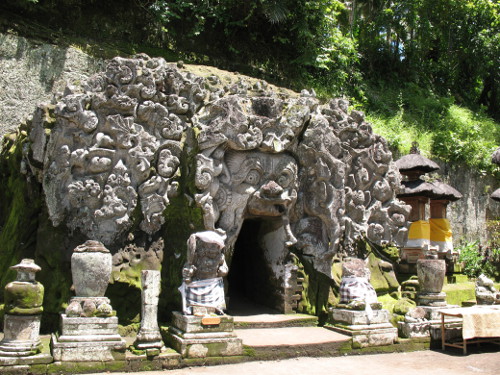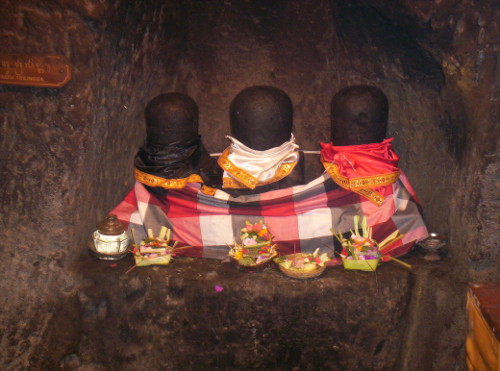Goa Gajah, also called the Elephant Cave, is situated east of Peliatan close to Ubud in the center of Bali. Goa Gajah dates from the 11th century and was discovered in 1922.

The entrance of the cave is formed by a monstrous creature with a wide opened mouth. The cave has a 13 meter long corridor that leads to a T-junction. At the end of the left hallway is a statue (1 m high) with four arms of Ganesha (the Hindu god with an elephant head). In the other hallway are the three linga, that represent the three manifestations of Shiva. Just before the entrance is a statue of the Buddhist goddess Hariti.
Opposite the cave is a fountain with six images of women. This was only uncovered in 1954 by the archaeologist J.C. Krijgsman. Along the cave runs the Petanu River.
Striking is the mix of Hindu and Buddhist elements. Around the year one thousand, the cave has already been used by Hindus; probably before by Buddhists.


